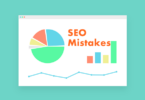FAQ schema markup is important for displaying FAQ rich snippets on search engines. To mark the FAQ Schema, we insert Json-LD or Microda codes with complete questions and answers.

Here are three ways to help you structure the FAQ Schema for your WordPress website to show rich results on Google search pages.
Method 1: Manual structure with Json-LD or Microdata code
You can use available structure of Json-LD and Microdata codes. Then, you will customize the questions and answers to suit the purpose of use. More or less FAQ groups are done on the basis of these codes.
However, with this approach, it takes time and be easy to cause errors in the FAQ schema markup of the code. It is because there are many small details in the structure codes. Therefore, this approach is not recommended.
This basic example of FQA Schema uses Json-LD codes:
<script type="application/ld+json">{ "@context": "https://schema.org", "@type": "FAQPage", "mainEntity": [{ "@type": "Question","name": "
This question 1?
","acceptedAnswer": {"@type": "Answer","text": "
Answer for question 1
"}},
{"@type": "Question", "name": "
This question 2?
","acceptedAnswer": {"@type": "Answer","text": "
Answer for question 2
"}},
{"@type": "Question", "name": "
This question 3?
","acceptedAnswer": {"@type": "Answer","text": "
Answer for question 3
"}}]}</script>Here is an example of FAQ Schema markup using Microdata:
<section itemscope itemtype="https://schema.org/FAQPage">
<div itemscope itemprop="mainEntity" itemtype="https://schema.org/Question">
<strong itemprop="name">
This question 1?
</strong>
<div itemscope itemprop="acceptedAnswer" itemtype="https://schema.org/Answer">
<div itemprop="text">
Answer for question 1
</div></div></div>
<div itemscope itemprop="mainEntity" itemtype="https://schema.org/Question">
<strong itemprop="name">
This question 2?
</strong>
<div itemscope itemprop="acceptedAnswer" itemtype="https://schema.org/Answer">
<div itemprop="text">
Answer for question 2
</div></div></div>
<div itemscope itemprop="mainEntity" itemtype="https://schema.org/Question">
<strong itemprop="name">
This question 3?
</strong>
<div itemscope itemprop="acceptedAnswer" itemtype="https://schema.org/Answer">
<div itemprop="text">
Answer for question 3
</div></div></div></section>
Method 2: Use the Schema code generation tool
The FAQ Schema generator helps to mark frequently asked questions more quickly. Using the code generation tool requires two basic steps:
- Open the tool of Schema markup creation at FAQ Schema Generator Json, then enter the questionsa and answers.
- After that, you copy and paste the code group into your web page.
The job is relatively simple, but you also need to be careful when you update the website content. Since you are using Java codes inserted in your post to mark up the FAQ Schema, so you need to notice when you update your website. And, you should avoid altering any of the code in the markup group you has created above.
However, just accidentally few symbols or tags can insert into the Shema markup codes, that can cause FAQ Schema error. So when you do this, you need to be careful to avoid risking your efforts.
Method 3: Use a FAQ Schema Shortcode plugin
The method of using a FAQ Schema Shortcode plugin is quite simple and quick to add FAQ Schema markup in WordPress. In adddition, using the shortcode plugin will avoid causing errors for Schema groups marked when you edit and update posts without paying attention to FAQ Schema structures.
- Step 1: You install the Easy FAQ Schema Markup plugin, and activate it.
- Step 2: Copy and paste the shortcodes into your web page as the examples.
- Step 3: Change the questions and answers to yours. Then, update your post. Done!
These are three essential ways to insert FAQ Schema codes into your WordPress websites. If you mark up FAQ Schema correctly, you have a better chance to show your FQA rich snippets in the search result pages of Google.
To make sure your work correctly, you always need to use Rich Results Test tool of Google to check what you have done.
For the SEO newbies, I strongly recommend using method 2 or method 3, which is simple to use to get better rich results.







Leave a Comment
Log in to post a comment.